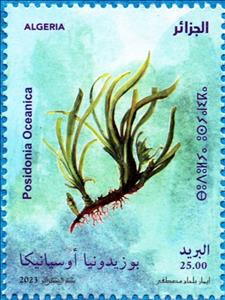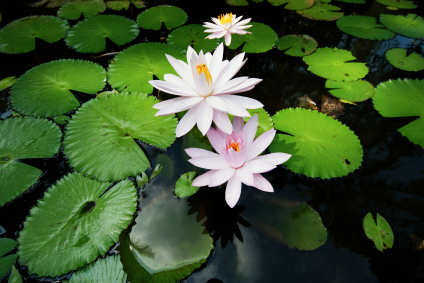Stamp: Neptune Grass (Posidonia oceanica) (Algeria 2023)
Neptune Grass (Posidonia oceanica) (Algeria 2023)
07 June (Algeria ) within release Environment Conservation (2023) goes into circulation Stamp Neptune Grass (Posidonia oceanica) face value 25 Algerian dinar
| Stamp Neptune Grass (Posidonia oceanica) in catalogues | |
|---|---|
| Colnect codes: | Col: DZ 2023.06.07-01 |
Stamp is square format.
Also in the issue Environment Conservation (2023):
- Stamp - Hartebeest (Alcelaphus buselaphus) face value 50;
- Stamp - Neptune Grass (Posidonia oceanica) face value 25;
Stamp Neptune Grass (Posidonia oceanica) it reflects the thematic directions:
Aquatic plants are plants that have adapted to living in aquatic environments (saltwater or freshwater). They are also referred to as hydrophytes or macrophytes. These plants require special adaptations for living submerged in water, or at the water's surface. The most common adaptation is aerenchyma, but floating leaves and finely dissected leaves are also common.
The principal factor controlling the distribution of aquatic plants is the depth and duration of flooding. However, other factors may also control their distribution, abundance, and growth form, including nutrients, disturbance from waves, grazing, and salinity.
Aquatic vascular plants have originated on multiple occasions in different plant families; they can be ferns or angiosperms (including both monocots and dicots). Seaweeds are not vascular plants; rather they are multicellular marine algae, and therefore are not typically included among aquatic plants. A few aquatic plants are able to survive in brackish, saline, and salt water. Examples are found in genera such as Thalassia and Zostera. Although most aquatic plants can reproduce by flowering and setting seed, many also have extensive asexual reproduction by means of rhizomes, turions, and fragments in general.
One of the largest aquatic plants in the world is the Amazon water lily; one of the smallest is the minute duckweed. Many small aquatic animals use plants like duckweed for a home, or for protection from predators, but areas with more vegetation are likely to have more predators. Some other familiar examples of aquatic plants might include floating heart, water lily, lotus, and water hyacinth.
Some aquatic plants are used by humans as a food source. Examples include wild rice (Zizania), water caltrop (Trapa natans), Chinese water chestnut (Eleocharis dulcis), Indian lotus (Nelumbo nucifera), water spinach (Ipomoea aquatica), and watercress (Rorippa nasturtium-aquaticum).
Flora is the plant life occurring in a particular region or time, generally the naturally occurring or indigenous—native plant life. The corresponding term for animal life is fauna. Flora, fauna and other forms of life such as fungi are collectively referred to as biota. Sometimes bacteria and fungi are also referred to as flora, as in the terms gut flora or skin flora.


